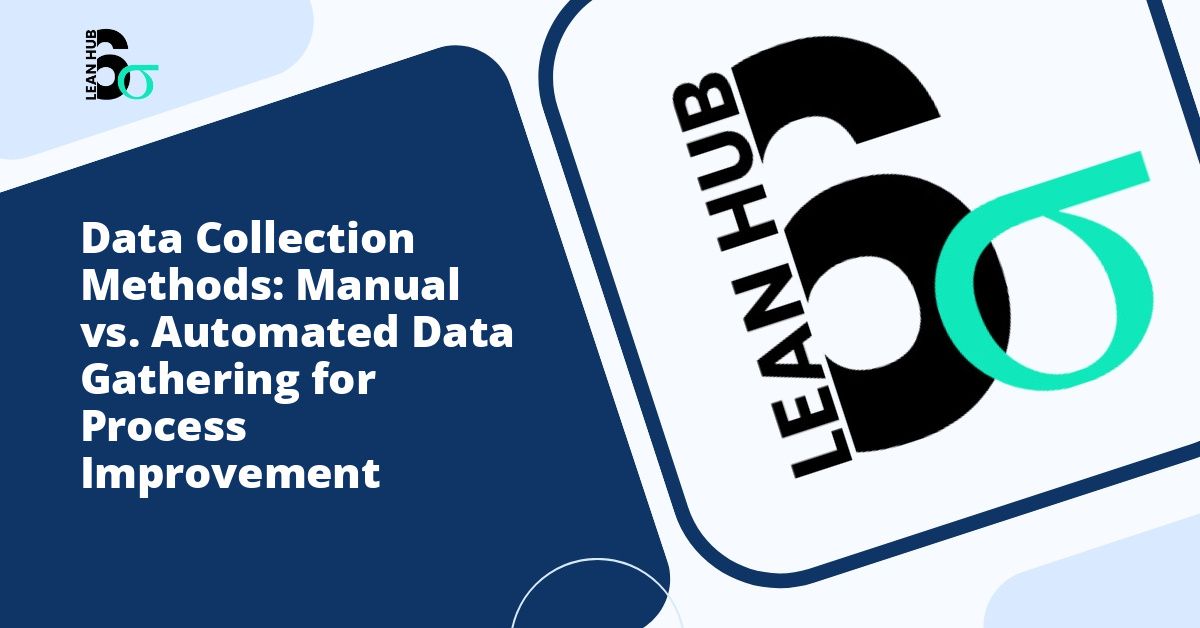In today’s data-driven business environment, organizations must make critical decisions about how they collect, process, and analyze information. The choice between manual and automated data gathering methods can significantly impact operational efficiency, accuracy, and overall business success. Understanding the strengths and limitations of each approach is essential for making informed decisions that align with your organizational goals.
Understanding Data Collection in Modern Business
Data collection serves as the foundation for informed decision-making across all industries. Whether you are implementing quality improvement initiatives or conducting market research, the method you choose for gathering data will influence the reliability and usefulness of your results. This becomes particularly important when organizations apply structured methodologies like lean six sigma, where data integrity directly affects the success of improvement projects. You might also enjoy reading about What is Measurement Systems Analysis and Why It Matters in Six Sigma.
The recognize phase of any improvement initiative requires careful consideration of how data will be collected and analyzed. This initial stage sets the tone for the entire project, making the selection of appropriate data collection methods crucial for achieving desired outcomes. You might also enjoy reading about Sample Size Calculation: How Much Data Do You Really Need in the Measure Phase.
Manual Data Collection Methods
Manual data collection involves human effort to gather, record, and organize information. This traditional approach has been used for decades and continues to play an important role in many business processes. You might also enjoy reading about Lean Six Sigma Measure Phase: The Complete Guide for 2025.
Characteristics of Manual Data Gathering
Manual methods typically involve paper forms, spreadsheets, direct observation, interviews, and surveys conducted by individuals. Team members physically record information, transfer it between systems, and perform initial analysis using basic tools. This hands-on approach provides direct human oversight throughout the entire data collection process.
Advantages of Manual Data Collection
- Flexibility and Adaptability: Human collectors can adjust their approach based on situational context, asking follow-up questions or clarifying ambiguous responses in real time.
- Lower Initial Investment: Manual methods often require minimal upfront costs, making them accessible to organizations with limited budgets or those conducting small-scale studies.
- Qualitative Insights: Human observers can capture nuanced information, emotional responses, and contextual details that automated systems might miss.
- Personal Interaction: Face-to-face data collection builds trust and rapport, potentially yielding more honest and complete responses from participants.
- Suitable for Complex Scenarios: When dealing with unusual situations or highly variable conditions, human judgment proves invaluable for determining what data to collect and how to interpret it.
Disadvantages of Manual Data Collection
- Time-Consuming Process: Manual data gathering requires significant time investment, from initial collection through data entry and verification.
- Human Error Risk: Transcription mistakes, recording errors, and inconsistent measurement techniques can compromise data quality.
- Scalability Limitations: As data volume increases, manual methods become increasingly impractical and resource-intensive.
- Potential Bias: Human collectors may inadvertently introduce bias through their presence, questioning techniques, or data interpretation.
- Delayed Access: Data often requires processing time before it becomes available for analysis, slowing decision-making processes.
Automated Data Collection Methods
Automated data collection utilizes technology to gather, record, and organize information with minimal human intervention. This modern approach has gained prominence as organizations seek efficiency and accuracy in their operations.
Characteristics of Automated Data Gathering
Automated systems employ sensors, software applications, web scraping tools, IoT devices, and integrated databases to collect information continuously or at predetermined intervals. These systems can process large volumes of data quickly and transfer it directly into analytical tools without manual intervention.
Advantages of Automated Data Collection
- Speed and Efficiency: Automated systems collect and process data at speeds impossible for human workers, enabling real-time monitoring and rapid response to changing conditions.
- Improved Accuracy: Technology eliminates transcription errors and ensures consistent measurement standards across all data points.
- Scalability: Automated systems handle vast quantities of data without proportional increases in cost or time investment.
- Continuous Monitoring: Technology enables 24/7 data collection, capturing information that might otherwise be missed during off-hours or weekends.
- Standardization: Automated methods ensure consistent data collection procedures, reducing variability and improving comparability across different time periods or locations.
- Cost-Effective Long Term: Despite higher initial investments, automation typically reduces per-unit data collection costs over time.
Disadvantages of Automated Data Collection
- High Initial Costs: Implementing automated systems requires significant upfront investment in hardware, software, and training.
- Technical Expertise Required: Organizations need skilled personnel to set up, maintain, and troubleshoot automated data collection systems.
- Limited Contextual Understanding: Automated systems may miss nuanced information or fail to adapt to unexpected situations requiring human judgment.
- System Vulnerabilities: Technical failures, software bugs, or connectivity issues can disrupt data collection and compromise data integrity.
- Privacy and Security Concerns: Automated data collection may raise ethical questions about surveillance and data protection, particularly when gathering personal information.
Integration with Lean Six Sigma Methodology
When implementing lean six sigma projects, data collection methods play a critical role in each phase of the DMAIC (Define, Measure, Analyze, Improve, Control) framework. During the recognize phase, teams must identify the problem and determine what data will be needed to understand it fully.
Organizations practicing lean six sigma often benefit from hybrid approaches that combine manual and automated methods. For instance, automated systems might collect operational data continuously, while manual methods gather customer feedback and contextual information. This combination provides both the quantitative metrics and qualitative insights necessary for comprehensive process improvement.
The choice between manual and automated collection methods in lean six sigma projects depends on factors such as data type, collection frequency, required accuracy levels, and available resources. Teams must carefully evaluate these considerations during the recognize phase to ensure their data collection strategy supports project objectives.
Choosing the Right Approach for Your Organization
Selecting between manual and automated data collection requires careful consideration of multiple factors specific to your organizational context.
Key Decision Factors
Data Volume: Small-scale projects with limited data needs may justify manual methods, while large-scale operations typically require automation for practical management.
Budget Constraints: Organizations with limited resources might start with manual methods and gradually transition to automation as budgets allow and needs expand.
Required Accuracy: When precision is critical and error margins must be minimized, automated systems generally provide superior consistency and reliability.
Time Sensitivity: Real-time decision-making demands automated systems that provide immediate data access, while less urgent needs may accommodate manual collection timelines.
Data Complexity: Highly variable or nuanced information often requires human judgment, while standardized data suits automated collection perfectly.
The Hybrid Approach: Best of Both Worlds
Many successful organizations adopt hybrid strategies that leverage the strengths of both manual and automated methods. This balanced approach allows businesses to maintain human oversight and contextual understanding while benefiting from technological efficiency and accuracy.
For example, retailers might use automated systems to track inventory levels and sales data while employing manual methods to gather customer satisfaction feedback and conduct store audits. This combination provides comprehensive insights that neither approach could deliver independently.
Conclusion
The debate between manual and automated data collection methods does not have a universal answer. Each approach offers distinct advantages and limitations that must be evaluated within your specific organizational context. Understanding these differences enables leaders to make strategic decisions that optimize data quality, operational efficiency, and resource allocation.
As businesses continue evolving in an increasingly digital landscape, the trend toward automation will likely accelerate. However, human insight and judgment remain irreplaceable in many scenarios, ensuring that manual methods will continue playing important roles. By thoughtfully combining both approaches where appropriate, organizations can build robust data collection strategies that support informed decision-making and drive continuous improvement.
Whether you are in the recognize phase of a lean six sigma project or developing broader organizational data strategies, investing time to select appropriate collection methods will pay dividends through improved data quality, more accurate insights, and better business outcomes.








